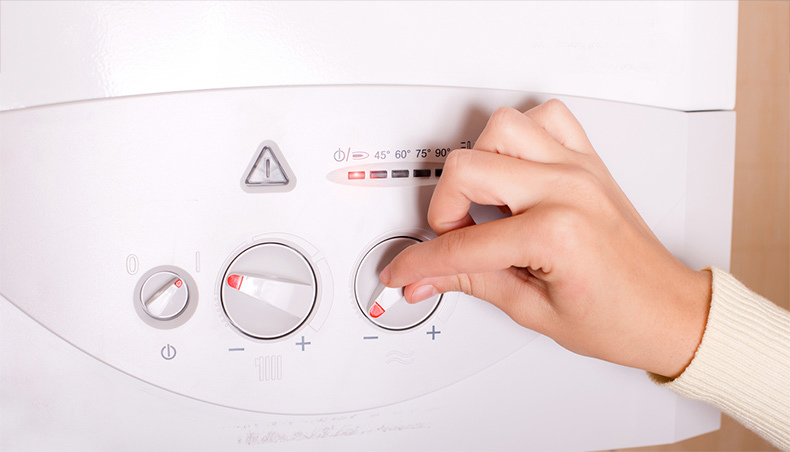Radiators are susceptible to internal build-ups that affect the performance of the system. When you bleed a radiator you let out air that has become trapped inside. This trapped air causes cold spots within the radiator, reducing their efficiency. When you bleed your radiators, you improve the performance. It takes less energy for your radiators to achieve your desired heat, which enables you to gain a warmer home for less.
You Will Need:
1 x radiator key
2 x rags
1 x container for collecting water
How To Bleed A Radiator:
- Turn on heating system
- Check radiators
- Turn heating off
- Fit bleed key to the valve
- Release air from bleed valve
- Close the bleed valve
- Repeat for all radiators
- Check boiler pressure
1. Turn Your Heating On
The first step is to turn your heating on and allow your radiators to warm up. Your radiators should reach full heat before bleeding to build up the pressure inside them.

2. Check Radiators
Once the radiators have reached full heat, you can assess each radiator in your home. To determine if they need to be bled, check for any cold patches (usually at the top depending on the position of the valve). If the radiators are taking too long too heat up, this is also a sign you will need to bleed them.
WARNING: Remember radiators can get very, very hot. Please be careful when checking them!

3. Turn Your Heating Off
It’s very important that you turn your heating off while you are trying to bleed your radiators. If you don’t do this you will end up with a lot of (potentially boiling) water on the floor.

4. Fit Your Key To The Bleed Valve
Take your radiator key and fit it to the bleed valve.
What Is A Radiator Bleed Valve?
A radiator bleed valve is a small metal square which is found inside a round nut, usually at the top of your radiator. The bleed valve is used to release air from your radiator. If your radiator key fits over it, the chances are you've found the bleed valve!

5. Open The Bleed Valve
Once your key is on the bleed valve, slowly turn it anti-clockwise to release air. You should hear a hissing sound as the air or gas escapes. Keep releasing air from the valve until you can no longer hear air escaping.

6. Close The Bleed Valve
Once you can no longer hear the air escaping, the excess air has been released and you can close the valve.
Make sure to do this quickly as once the air has been removed, water will start to move towards the valve and could flood out.
Modern screwdriver escape valves usually produce a far more violent ejection of water than older radiator valves, so be extra careful to use rags to prevent any spillage.
7. Repeat For All Radiators
Repeat this process for all the radiators which need bleeding. As air will rise upwards through your heating system, it's recommended you start on the lowest radiators in your home and then move upstairs.
8. Check The Boiler Pressure
Once you have completed the process on all the boilers that need bleeding, you will need to check the pressure gauge on your boiler against the recommended amounts. If the pressure is normal, you can turn your heating back on and check whether all your radiators are now working correctly.
If the pressure is too low, you will need to rebalance the pressure by adding water using the filling loop.
Make sure you always refer to the official instructions from your boiler manufacturer. If you are not sure how to do anything, ensure you seek professional assistance.

If you have completed all these steps and your heating system is functioning well, you have successfully bled your radiators. It is recommended you should bleed your radiators once every 12 months to achieve the best possible performance.
What If The Cold Persists After Bleeding?
If any cold spots persist, first simply turn off the heating and repeat the above process.
You may not have fully bled the radiator in question of trapped air. It is common to have to perform the bleeding process a couple of times before your whole home heating system is back to full functionality.
If cold spots remain after repeat bleeds have been made, it is possible that you have a build-up of rust (also known affectionately in the home heating industry as ‘sludge’). If this is the case, you will need to get in touch with a qualified engineer to remove this build-up or follow our guide on how to flush sludge from your radiators if you feel up to the task yourself.








